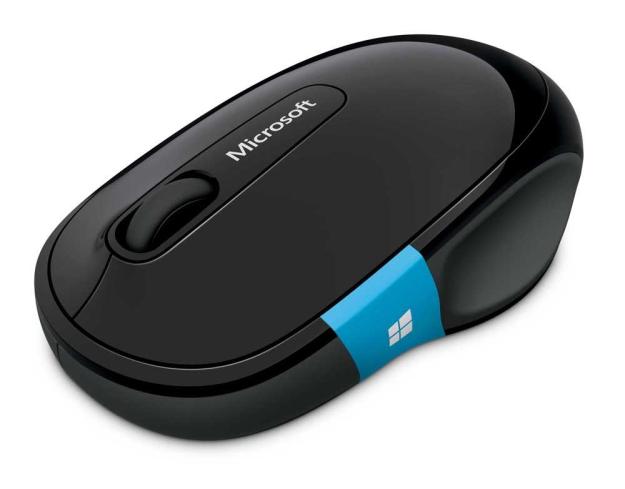
Does a mouse need a dedicated Windows button? Microsoft thinks it’ll make navigating Windows 8 easier and added it – in bright blue, no less – to the brand new Sculpt Comfort Mouse, and Sculpt Mobile Mouse.
The unassuming Windows key that’s been quietly nestled next to the Alt key for years – a wallflower compared to the more popular Control key – is suddenly very relevant to Windows 8 users. Many of the Charms-related tasks are controlled with the Windows key, and difficulties navigating with non-touchscreen Windows 8 setups has been a common complaint among the new operating system’s users. Microsofts seems to be offering these budget mice as a panacea for frustrated consumers.
The larger of the two is the Sculpt Comfort Mouse. As you might have surmised, it’s designed for extended use and, well, comfort. The Windows button on this mouse is actually touch sensitive and swiping it allows users to switch between apps. The button is located under your thumb if you’re right-handed. Microsoft isn’t too concerned with comfort for lefties, because these users will have to use their pinky to control and activate the Windows button on the mouse. It also features a four-way scroll wheel so you can scroll up, down, and side to side. This model connects via Bluetooth and is powered by a couple of AA batteries.
The Sculpt Mobile Mouse is meant to be – you guessed it – used on the go. It’s not as spacious under your palm as the Sculpt Comfort Mouse, but its Windows key is located just behind the scroll wheel on the top of the mouse. On this model, the Windows key is not touch sensitive, but it does feature the same four-direction scroll wheel. Oddly enough, for a peripheral that’s meant to travel, Microsoft opted for a tiny USB dongle to enable wireless mousing instead of a Bluetooth connection. While this decision may have helped keep costs down, it’s remarkably easy to damage or lose that tiny dongle, especially when you’re frequently placing and removing your laptop from a form-fitting sleeve.
The Sculpt Mobile Mouse will cost you $29, while the Sculpt Comfort Mouse will cost $39. Both mice will be available next month.



